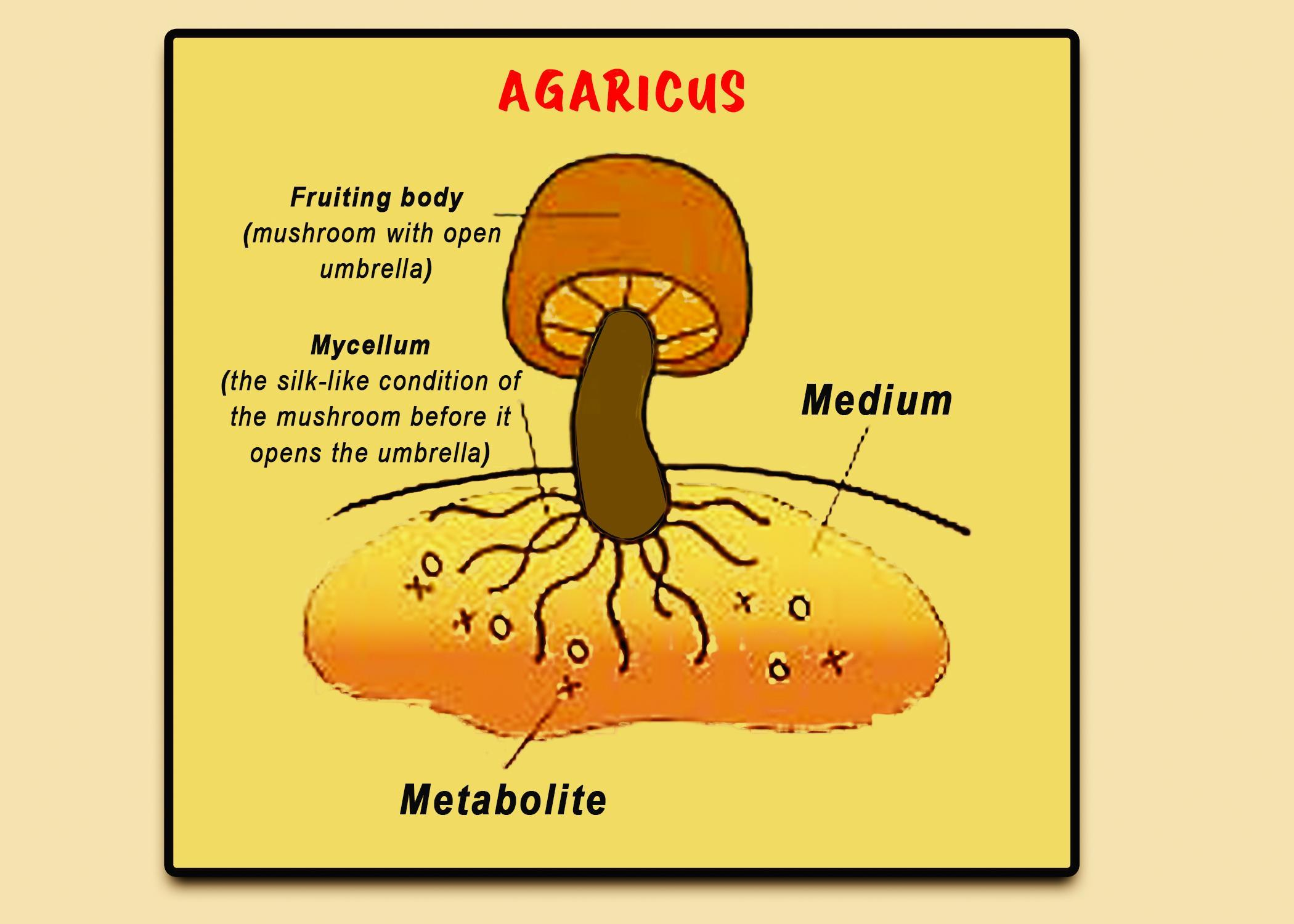
In Agaricus, the fruiting body is made up of……………………. mycelium
Answer
548.4k+ views
Hint: Agaricus comes under Basidiomycetes or club fungi in kingdom Fungi. It is called “Gill fungi” because gill-like pores are present in its fruiting body. Its other name is fairy rings because its fruiting body looks like rings.
Complete answer:
- In basidiomycetes, mycelium is septate and uni or binucleate and is branched.
- In mycelium septum is called dolipore septum. One big pore is present between every septum. These septa allow cytoplasm and nucleus to pass from one cell to another cell.
- The clamped connection is present in basidiomycetes.

- Asexual spores are not present. Vegetative reproduction is by fragmentation.
- Sexual reproduction is mainly by somatogamy where two somatic cells of different strains come close and their apical ends fuse. The basidium is formed.
- Both nuclei come together (dikaryon) and karyogamy takes place which on meiosis forms haploid spores.
- Fungal hyphae grow to form a fruiting body. It is called the basidiocarp.
- Basidiospores are exogenous in origin.
Additional information:
- Basidiomycetes are commonly known by different names. These include mushrooms, bracket fungi, and puffballs.
- They are the most advanced fungi. They are very good decomposers of wood.
- Mycelium can be primary as well as secondary.
- Common rust and smut fungi belong to basidiomycetes.
- They lack sex organs.
- Basidium undergoes karyogamy followed by meiosis to form four basidiospores.
- Their hyphae spread like a fan.
- Cell wall is made up of chitin and polysaccharides.
So in Agaricus, mycelium is branched and separated.
Note: In fungi, there is a mass of interwoven hyphae called mycelium. Chitin is a polymer of N-acetylglucosamine. They have heterotrophic nutrition. They don’t possess chlorophyll. They are multicellular eukaryotes. They are highly capable of recycling nutrients.
Complete answer:
- In basidiomycetes, mycelium is septate and uni or binucleate and is branched.
- In mycelium septum is called dolipore septum. One big pore is present between every septum. These septa allow cytoplasm and nucleus to pass from one cell to another cell.
- The clamped connection is present in basidiomycetes.

- Asexual spores are not present. Vegetative reproduction is by fragmentation.
- Sexual reproduction is mainly by somatogamy where two somatic cells of different strains come close and their apical ends fuse. The basidium is formed.
- Both nuclei come together (dikaryon) and karyogamy takes place which on meiosis forms haploid spores.
- Fungal hyphae grow to form a fruiting body. It is called the basidiocarp.
- Basidiospores are exogenous in origin.
Additional information:
- Basidiomycetes are commonly known by different names. These include mushrooms, bracket fungi, and puffballs.
- They are the most advanced fungi. They are very good decomposers of wood.
- Mycelium can be primary as well as secondary.
- Common rust and smut fungi belong to basidiomycetes.
- They lack sex organs.
- Basidium undergoes karyogamy followed by meiosis to form four basidiospores.
- Their hyphae spread like a fan.
- Cell wall is made up of chitin and polysaccharides.
So in Agaricus, mycelium is branched and separated.
Note: In fungi, there is a mass of interwoven hyphae called mycelium. Chitin is a polymer of N-acetylglucosamine. They have heterotrophic nutrition. They don’t possess chlorophyll. They are multicellular eukaryotes. They are highly capable of recycling nutrients.
Recently Updated Pages
Master Class 12 Business Studies: Engaging Questions & Answers for Success

Master Class 12 Economics: Engaging Questions & Answers for Success

Master Class 12 English: Engaging Questions & Answers for Success

Master Class 12 Maths: Engaging Questions & Answers for Success

Master Class 12 Social Science: Engaging Questions & Answers for Success

Master Class 12 Chemistry: Engaging Questions & Answers for Success

Trending doubts
What is meant by exothermic and endothermic reactions class 11 chemistry CBSE

Which animal has three hearts class 11 biology CBSE

10 examples of friction in our daily life

One Metric ton is equal to kg A 10000 B 1000 C 100 class 11 physics CBSE

1 Quintal is equal to a 110 kg b 10 kg c 100kg d 1000 class 11 physics CBSE

Difference Between Prokaryotic Cells and Eukaryotic Cells




